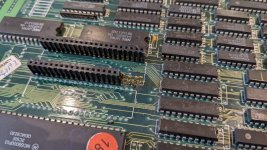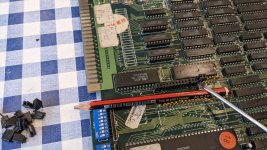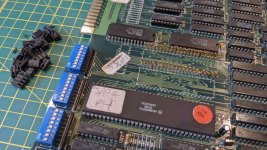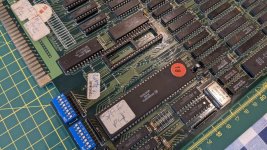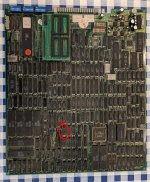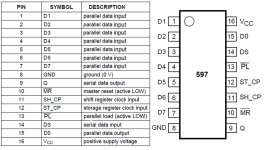I am not sure what variant you have, especially since the program roms are the things that are missing. I can't find a 1:1 match between this and something dumped but you can go through the files and see if any of the labels & locations match perfectly. You need the 'main cpu' code burned onto chips on that sub-board. so perhaps this one https://github.com/mamedev/mame/blo...3cfdabb47205/src/mame/drivers/cps1.cpp#L10507 is a decent place to start if you're just winging it. to figure out which type of eproms to use you check the filesize on disc or in mame, confirm the pin count, and if you're stuck between multiple types you have to figure out where 5v and ground are and compare to the chips pinouts. that usually will tell you which variant is suitable. You're probably in need of two of each from this table but the pinout is going to tell you which one(s). Or four of the larger size, but doubling the binary so the code fills the chip.

Here's my attempt at trying to make the pinout of the daughterboard easy to understand.It won’t boot without 5v that’s true. But you need to have programmed all main cpu roms on the appropriately sized and pinned chips as well. Did you find right sized and pinned chips? You said you only had 27c2001’s which are only valid for 2mbit data, and all the variants I see use at least 2x4mbit as well
I haven't really studied it in detail yet myself, but if anyone can see what's going on here then please let me know.
In the meantime I'll try and make it easier to read.
Attachments
Last edited:

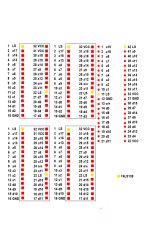

 becoming corrupted somehow.
becoming corrupted somehow.